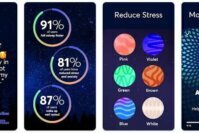Video bitrate will be a familiar term if you deal with video content creation. Most people know that bitrate is an essential factor that affects the overall quality of the video. However, not many understand what video bitrate is or how much video bitrate matters while producing or live-streaming video content.
Considering that videos are becoming the best way to reach out to people, a better understanding of video bitrate is not just helpful but necessary. Fret not; I have explained in detail what video bitrate is and how you can use this quality indicator to make your video content look sharp and on-point.
Contents
- What is Video Bitrate?
- How Does Video Bitrate Impact Video Quality?
- What Other Factors Contribute to Video Quality?
- Video Bitrate and Bandwidth Limits while Broadcasting
- How to Optimize High Bitrate Video for Bandwidth Limits?
- How to Enable Buffer-free Broadcasting?
- Frequently Asked Questions About Video Bitrate
- The Pro Review from TechReviewPro
What is Video Bitrate?
Video bitrate refers to the amount of video data transferred at any point during playback. A video with a high bitrate means it will have a higher quality than a video with a lower bitrate. Video bitrate is measured in Kbps, which is Kilobytes per second.

So, for instance, if we say that the bitrate of a video is 100Kbps, it means the video will consume 100 Kilobytes of data per second during the transfer. As you can guess, these numbers are essential while live-streaming content or publishing videos via platforms like YouTube or Vimeo.
If we take the case of live-streaming, for instance, there are two sides to the process. First, we have upload, which refers to transferring data from a recording/mixing device to a web server. Second, we have download, which is transferring data from a web server to an endpoint device.
In both cases, the transfer speeds are measured in Kbps or Mbps. A higher transfer speed means that the connection can transfer more content. When it comes to the subject of videos, a higher bitrate means higher video quality.
Long story short, video bitrate plays a crucial role in determining the quality of the video. Now that you know what video bitrate is, let us discuss the importance of video bitrate in video quality.
How Does Video Bitrate Impact Video Quality?
As I said earlier, a video with a higher bitrate means it transfers more data in a second. As a result, it will translate to higher video quality and subsequently a larger video file size. On the other hand, a video with a lower bitrate translates to low quality and smaller video file size.
Therefore, a video must have a high bitrate if you want it to do well while streaming the content. However, the network you use for broadcasting must also be equipped to handle such a huge file. It is why you have to look at factors like bandwidth limits, buffering, etc.
Well, before I talk about those issues, we should recognize the other factors as well that contribute to the overall video quality.
What Other Factors Contribute to Video Quality?
Here are two significant factors that determine the playback quality (and therefore the size) of the video.
1. Resolution
Resolution is the number of pixels that make up the video frame. If a video frame consists of more pixels, it will be sharper and clearer. The resolution of a video is shown in a width x height format. However, in broadcasting, professionals use terms like 480, 720, 1080, 4K to designate the resolution of a video.
For instance, a 1080p video will have a minimum of 2,073,600 pixels in a single frame. Therefore, technically speaking, it must be called 1920 x 1080 resolution. As you can guess, the resolution of a video will impact its overall quality and size. For example, if we take two videos of the same length, one shot in 1080p and the other in 4K, the video in 4K quality will be larger and sharper.
Therefore, if you want to ensure the maximum quality for a video, you have to record it in the highest quality possible. As of now, 1080p is the standard option, even though 4K UHD is taking its place. Even smartphones today come with 4K 60fps recording options.
With professional recording gear at your disposal, recording 4K videos is as easy as a piece of cake. How do I know this? It’s because I shoot most of my videos in 4K quality. Take a look at the TechReviewPro YouTube channel to see how it looks.
2. Frame Rate
While the resolution of a video is the number of pixels in a frame, the frame rate is the number of frames played in a second to create movement. As a result, this number is measured in frames per second (fps). Although 24fps is the standard for video streaming, higher frame rates like 30, 60, and 120 are also available.
As you can guess, a video with a higher refresh rate will be smoother and better quality. So, it becomes a value addition while broadcasting dynamic content like sports, music events, etc. For example, suppose you consider two 1080p videos: one shot at 30fps and the other at 60fps.
In this case, the 60fps video will look more professional and smoother. However, I must add that high-frame-rate video is not suitable for all occasions. Therefore, it is up to you, the content creator, to choose between different frame rates to shoot the video in.
Miscellaneous Factors that Affect Video Quality
Other settings on your recording gear may also impact the quality of the video. For instance, the compression technique used by the system is a crucial factor. More importantly, it is an area where we see a lot of growth and development. Industry innovators come with video compression algorithms that reduce the size even while keeping the highest possible quality.
Now that you know how video bitrate affects the broadcasting process, shall we discuss some of the issues you may encounter?
Video Bitrate and Bandwidth Limits while Broadcasting
I already told you that video bitrate impacts how smoothly you can live-stream or broadcast the video content. First, however, you must have a capable internet connection to make this possible. While aspects such as latency and signal strength matter significantly, the most crucial factor is the network bandwidth itself.
In a network, bandwidth is the highest amount of data it can transfer at a point. For example, if a network says it has a 100Mbps bandwidth, the network can handle up to 100Mbps of data at a time. As you may have already guessed, low bandwidth will cause problems in video broadcasting and playback. There are two types of bandwidths in a network: upload bandwidth and download bandwidth.

Here is the problem, though. Not all networks offer the recommended amount of bandwidth that you need for a smooth video streaming experience. According to statistics, you need an upload speed of 13Mbps for streaming 1080p30 content without any issues. Of course, the streaming would work with bandwidths as low as 2.75Kbps, but it would be chaos.
I would like to remind you that a video with a higher bitrate will have a larger size. As a result, it will need a higher network bandwidth. In this case, compromising the video bitrate will ruin the quality. But, on the other hand, if you do not optimize the content for the network, you will end up disrupting the streaming process. So, what should you do?
How to Optimize High Bitrate Video for Bandwidth Limits?
As I said, compromising video bitrate is not an option for most people. Therefore, you can try one of these two methods I have mentioned below.
High-efficiency video coding or H.265
High-efficiency video encoding is an effective way to optimize high-bitrate video to suit bandwidth limits. If you didn’t know, H.265 is the extended version of AVC, the standard for video compression in the industry. However, unlike the H.264 compression, HEVC does not compromise the quality of the video. It means you can reduce the size of the video file with minimal impact on quality.
Adaptive Bitrate Streaming
Adaptive Bitrate Streaming, also known as ABS, is great when you want to enable buffer-less streaming with minimal impact on the video quality. More importantly, viewers will have an option to choose between many viewing resolutions. For instance, if a user does not have a high download bandwidth, they can stream at a lower resolution and vice versa.
The Right Frame Rate
As you can guess, a higher frame rate means a higher video bitrate. Therefore, you should stick to standard frame rates whenever possible. Of course, certain events can benefit from the extra frames in a second, such as sports. But, if you think the purpose can run decently with 30fps video, you should stick to 30fps, thereby keeping the video size minimal.
How to Enable Buffer-free Broadcasting?
As you have seen, enabling buffer-free broadcasting is crucial in the world of entertainment and marketing. Here are some tips that will help you enable such an experience.
#1. Choose the Most Suitable Video Bitrate
You can follow the most suitable video bitrate for the content as shown below.
- 4.5 to 6Mbps for Full-HD video at 60fps
- 3.5 to 5Mbps for Full-HD video at 30fps
- 3.5 to 5Mbps for HD video at 60fps
- 2.5 to 4Mbps for HD video at 30fps
These bitrate levels are the best for YouTube, Twitch, and Facebook.
#2. Use the Right Connection
You should stick to a wired internet connection whenever you can. Even though Wi-Fi seems convenient, it is not as reliable as an Ethernet connection. By choosing an Ethernet connection over Wi-Fi, you can make use of maximum bandwidth.
#3. Use the Right Software
You have to use the right hardware and software for your streaming gear. Old streaming gear and software may work, but they can affect the overall efficiency. To prevent such a scenario, you have to keep both your software and hardware up to date.
Here is a recommended list of the best live-streaming software.
Frequently Asked Questions About Video Bitrate
How does video bitrate affect quality?
A higher video bitrate means more data is being uploaded every second. It means the video will have a higher quality than a video with a lower bitrate. When combined with a good video resolution (for instance 4K UHD or 1080p Full HD), a high video bitrate will contribute to a high-quality video. Therefore, you cannot ignore the role of bitrate while determining the overall playback quality of the video.
What is a good bitrate for a 1920 x 1080 video?
1920 x 1080 video, which is better known as 1080p video, is the most common resolution that is used for streaming and content publishing. Ideally, a higher bitrate is suitable for ensuring maximum quality. However, considering the need for bandwidth, you should have a bitrate of 4000Kbps to 8000Kbps. It means your connection must have an upload speed of 4Mbps to 8Mbps.
Which bitrate is the best for video?
I cannot recommend a universal bitrate that is suitable for video. Because, the ideal bitrate for a video will depend on a number of factors, including the resolution and the quality you expect from the content. For instance, if we are talking about a 1080p Full-HD video, it must have a bitrate of 4000Kbps to 8000Kbps. On the other hand, regular HD videos will work fine with a bitrate range of 2500Kbps to 5000Kbps.
What is dynamic bitrate?
Dynamic Bitrate is a technology that can change the bitrate of the streamed content based on the network conditions. More importantly, it will provide users with an option to choose the right streaming quality as per their needs. For instance, if a user does not have a fast internet connection, they can stream the content at 480p or 360p. On the other hand, those who have a superfast connection can enjoy the stream at 4K UHD.
Is lower bitrate better?
Lower bitrate may sound better when you consider the network-based limitations involved in a streaming system. However, when we take a holistic picture, a lower bitrate is not good for the project. As I said, a lower video bitrate means lower streaming quality. When you are streaming content where details matter, choosing low bitrates for the sake of network friendliness is not a wise decision.
The Pro Review from TechReviewPro
As you can see, video bitrate is more important than you may have thought. It is not rocket science, and you can master it with some trial-and-error runs. Nevertheless, if you want to make your first live-streaming an impressive task, you should start with the recommended settings in the first place.
What are your thoughts? Do you have any questions about video bitrate for streaming? Do let me know in the comments below.
Also Read:




